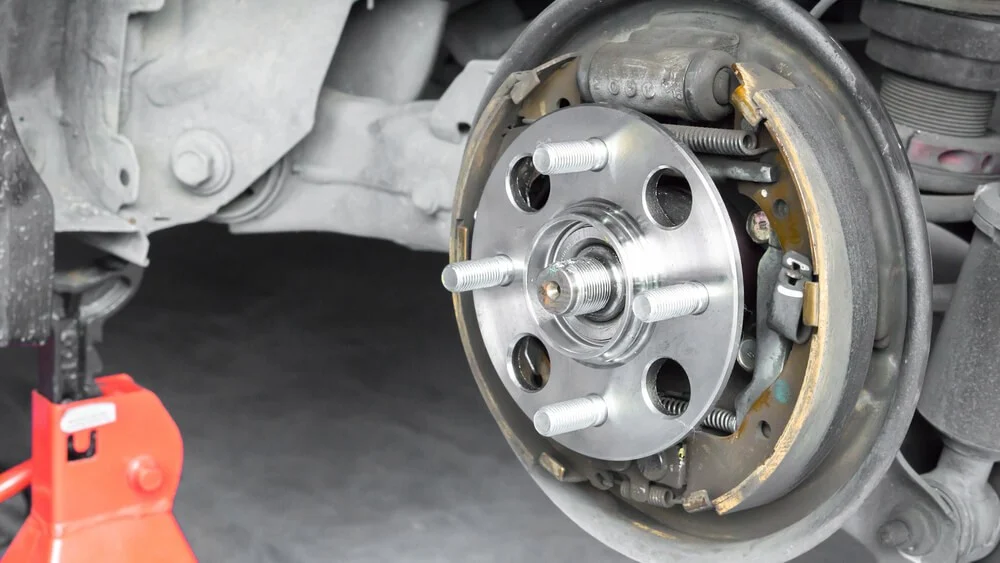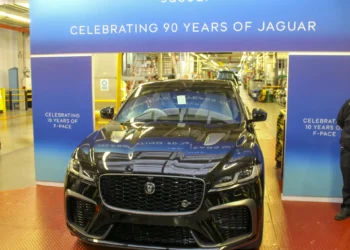Rolamentos de rolos
Os rolamentos de rolos são outro tipo comum de rolamentos utilizados em veículos. Ao contrário dos rolamentos de esferas, os rolamentos de rolos têm rolos cilíndricos ou cónicos entre os anéis interiores e exteriores.
Vantagens:
- Capacidade de carga elevada: Os rolamentos de rolos são capazes de suportar cargas mais pesadas do que os rolamentos de esferas, tornando-os ideais para veículos pesados como camiões e SUVs.
- Maior capacidade de absorção de choques: Os rolos nos rolamentos de rolos têm uma maior capacidade de absorção de choques, o que resulta numa condução mais suave em terrenos acidentados.
Desvantagens:
- Maior fricção: Comparados com os rolamentos de esferas, os rolamentos de rolos têm uma maior fricção entre as superfícies de contacto, o que pode resultar num maior desgaste e menor vida útil do rolamento.
- Velocidade de rotação limitada: Os rolamentos de rolos não são tão adequados para altas velocidades como os rolamentos de esferas, tornando-os menos ideais para veículos de passageiros.
Rolamentos cónicos
Os rolamentos cónicos são um tipo especial de rolamentos de rolos que têm uma forma cónica. Estes rolamentos são frequentemente utilizados em veículos de tração traseira, onde a carga é distribuída de forma mais uniforme.
Vantagens:
- Alta capacidade de carga: Os rolamentos cónicos têm uma capacidade de carga ainda maior do que os rolamentos de rolos, tornando-os ideais para veículos pesados e de tração traseira.
- Estabilidade: Devido à sua forma cónica, os rolamentos cónicos oferecem uma maior estabilidade e resistência a movimentos laterais.
Desvantagens:
- Complexidade de design: Os rolamentos cónicos têm um design mais complexo do que os rolamentos de esferas e de rolos, o que pode dificultar a sua instalação e manutenção.
- Maior fricção: Comparados com os outros tipos de rolamentos, os rolamentos cónicos têm uma maior fricção, o que pode resultar num maior desgaste e menor vida útil do rolamento.
Sensitivity to contaminants: Ball bearings can be easily damaged by dirt or moisture, requiring regular inspection and cleaning.
Examples of vehicles: Ball bearings are often used in passenger cars such as the Toyota Corolla, Honda Civic, and Volkswagen Golf.
Roller bearings
Roller bearings use cylindrical rollers instead of balls, allowing them to support higher loads than ball bearings.
Advantages:
- High load capacity: Roller bearings can support heavy loads, making them ideal for heavy vehicles.
- Low friction: The cylindrical shape of the rollers provides low friction, which helps improve bearing efficiency.
- Durability: Roller bearings have a longer lifespan due to their ability to withstand high loads.
Disadvantages:
- Complex construction: Roller bearings have a more complex design, which can make installation and maintenance difficult.
- Limited rotation speed: Due to the increased contact between the rollers and the rings, roller bearings may not operate at the same high speeds as ball bearings.
Examples of vehicles: Roller bearings are often used in trucks and commercial vehicles, such as the Ford F-150, Volvo FH, and Mercedes-Benz Actros.
Tapered bearings
Tapered bearings have tapered rollers that are inclined to the axis of rotation. This allows them to support both radial and axial loads simultaneously.
Advantages:
- High load capacity: Tapered bearings can handle heavy loads, making them suitable for heavy vehicles with a lot of cargo.
- Stability: Due to the tapered shape of the rollers, tapered bearings provide a stable and uniform distribution of the load.
- Versatility: Tapered bearings can be used in a variety of conditions and can handle different types of loads.
Disadvantages:
- Complex design: Tapered bearings have a complex design, which can make their installation and maintenance difficult.
- Cost: Tapered bearings can be more expensive to manufacture and replace than other types of bearings.
Examples of vehicles: Tapered bearings are often used in heavy vehicles and off-road vehicles, such as the Jeep Wrangler, Land Rover Defender, and Toyota Land Cruiser.
The hub bearing of your car, whether it is ball, roller or tapered, plays a fundamental role in ensuring reliable and safe driving. Regardless of the type of bearing, regular maintenance and timely replacement will keep your vehicle running reliably and safely.
Statistics: According to SKF research, tapered bearings account for about 40% of the heavy-duty vehicle bearing market, while ball bearings dominate the passenger vehicle segment with a market share of about 70%.
The choice of the correct type of hub bearing depends on the specific requirements and operating conditions of the vehicle. Ball bearings are suitable for passenger vehicles due to their simplicity and high rotational speed. Roller bearings are ideal for heavy-duty vehicles due to their high load capacity and durability. Tapered bearings offer versatility and stability, making them suitable for use in a variety of environments. Regardless of the type of bearing, regular maintenance and timely replacement will ensure reliable operation and safety of your vehicle.









